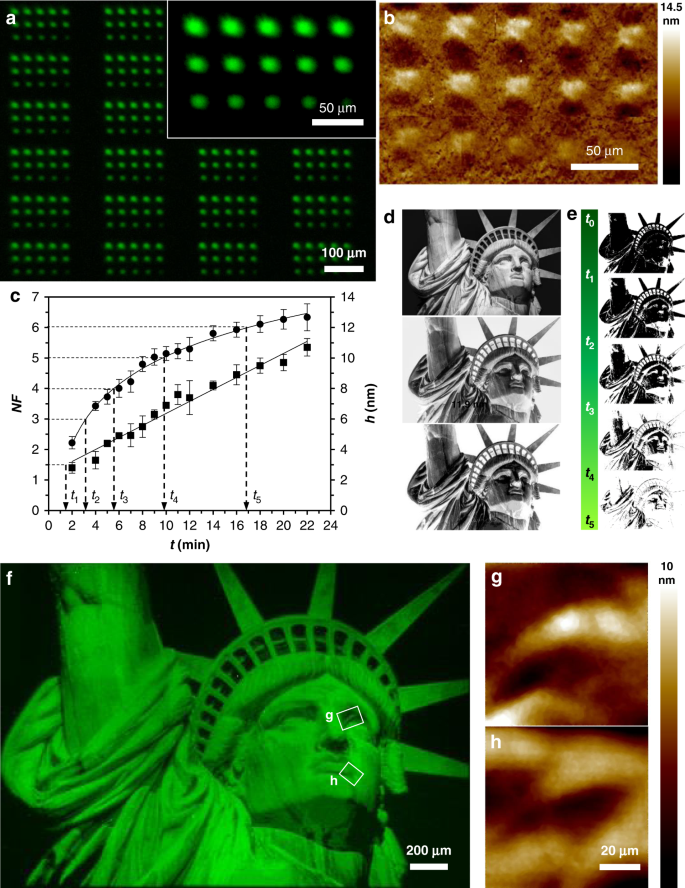(Stanford device brings silicon computing power to brain research and prosthetics)
2020/3/20 スタンフォード大学

・ スタンフォード大学が、シリコン CMOS チップを活用したブレイン・マシーン・インターフェイス(BMI)デバイスを開発。
・ BMI デバイスは、義肢、疾病治療や脳研究ですでに利用が進んでいるが、新 BMI デバイスはそれらの既存デバイスに比して、非侵襲的にデータをより多く記録できる。従来のチップ製造の知見を手放し、2D のシリコンエレクトロニクスを 3D 構造の脳に適用させる新プロセスを設計した。
・ 新 BMI デバイスは、人間の毛髪の半分の薄さのマイクロワイヤのアレイと CMOS チップより構成。脳に優しく挿入されるマイクロワイヤアレイが外部の CMOS チップに直接接続し、各ワイヤを通過する脳の電気信号をニューロン毎に記録する。生体に安全なポリマーで各ワイヤを包み金属の環で纏めることで、主要なコンポーネントである数百本の微細なワイヤの強度と耐久性を保持しながら、各ワイヤの間隔と適正な配置を確保。金属環の下でポリマーを取り除き、各ワイヤを脳に個別に対応させる。
・ 既存の BMI デバイスでは、約 100 本のワイヤの 100 チャンネルで電気信号が得られるが、各ワイヤを手作業でアレイに配置する必要がある。設計と製造技術の高度化により、新デバイスでは数千本のチャネルのアレイを実現した。
・ 新デバイスの設計は、既存の高密度の記録デバイスのものとは完全に異なり、アレイの形状、サイズ、密度を製造時に変更できるため、あらゆる 3D 配置での様々な脳の領域・深度の信号の同時記録を可能にする。新デバイスの普及が進めば、正常時・異常時の脳機能の理解に大きく貢献すると考える。
・ ラットの網膜細胞と生きているマウスの脳で新 BMI デバイスを試験した結果、両ケースでマイクロワイヤアレイの数百本のチャンネルを通じた有意な信号の獲得に成功。現在、アレイの耐久性とスケールアップしたデバイスの性能の確認に向け長期の研究を実施中。
・ また、デバイスが提供できるデータの種類について調査しているが、脳内で起きている学習と失敗の観察の可能性を示唆することがわかった。研究をさらに進め、脳内での設置可能期間と、特に学習に関する信号の意味の解明、また、義肢や言語支援でのアプリケーションを試みる。
・ 本研究は、米国立衛生研究所(NIH)、国防高等研究計画局(DARPA)、Wu Tsai Neurosciences Institute、英国フランシス・クリック研究所、ヒューマン・フロンティア・サイエンスプログラムおよび英国医学研究審議会(MRC)が支援した。
URL: https://news.stanford.edu/2020/03/20/bringing-silicon-computing-power-brain/
(関連情報)
Science Advances 掲載論文(フルテキスト)
Massively parallel microwire arrays integrated with CMOS chips for neural recording
URL: https://advances.sciencemag.org/content/6/12/eaay2789
Abstract
Multi-channel electrical recordings of neural activity in the brain is an increasingly powerful method revealing new aspects of neural communication, computation, and prosthetics. However, while planar silicon-based CMOS devices in conventional electronics scale rapidly, neural interface devices have not kept pace. Here, we present a new strategy to interface silicon-based chips with three-dimensional microwire arrays, providing the link between rapidly-developing electronics and high density neural interfaces. The system consists of a bundle of microwires mated to large-scale microelectrode arrays, such as camera chips. This system has excellent recording performance, demonstrated via single unit and local-field potential recordings in isolated retina and in the motor cortex or striatum of awake moving mice. The modular design enables a variety of microwire types and sizes to be integrated with different types of pixel arrays, connecting the rapid progress of commercial multiplexing, digitisation and data acquisition hardware together with a three-dimensional neural interface.


